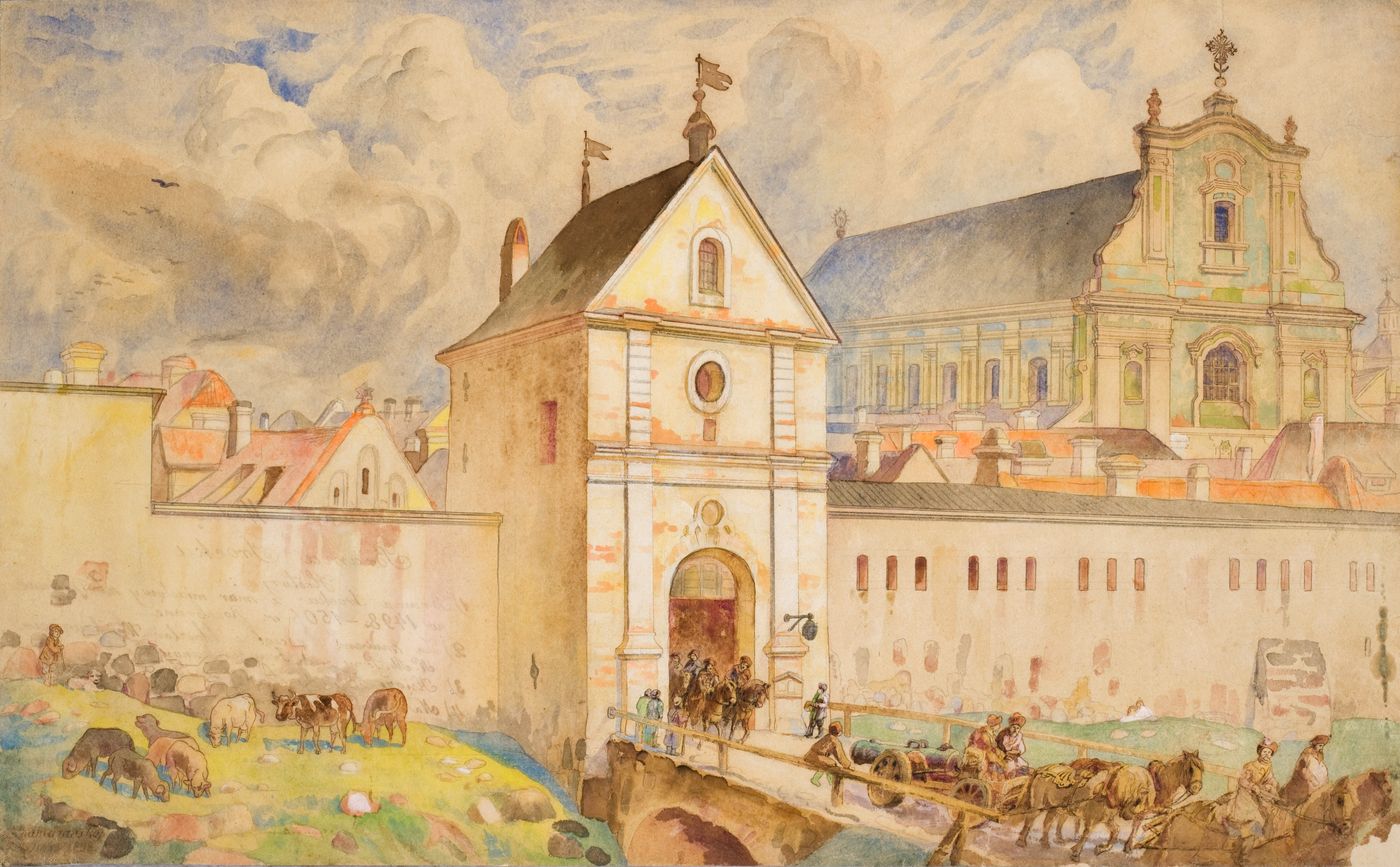Site of the 14th Century Mounds
As you go down Pylimo Street, try to imagine that in the 14th century it served as the city boundary and the edge of Vilnius’ defensive wall, and the fortifications were reinforced with mounds of soil. The construction of the wall started in 1503 by order of Duke Alexander – both the castle and city residents had to be protected from attacks by Crusaders and Tatars. City dwellers also had to contribute to the wall’s construction, which took 20 years to complete. The defensive fortifications had to be installed at the western approaches to the city, which were its key access points in the territories of the Trakų, Pylimo and Naugarduko streets.
However, the city expanded and over the centuries, its boundaries also stretched. Peace in Vilnius was ensured by the “Guard of the City Gate” monument decorated with Gediminas’ Pillars, located on the building at the corner of Trakų and Pylimo streets. Today the elements of the defensive wall have become an integral part of the city’s architecture; its remains have been integrated into the old buildings. For example, the façade of the building at Pylimo g. 30 provides a view of the wall’s former loopholes.
The 14th century: grey and legendary Vilnius
- Monument to Gediminas
- Catacombs Beneath the Cathedral
- Catacombs of the Palace of Grand Dukes of Lithuania
- Bishops’ Palace
- Pilies Street
- The Church of Saint Paraskeva and the Altar of Ragutis
- Medeinė
- St. Nicolas’ Church
- Site of the 14th Century Mounds
- Church of the Holy Spirit
- The Cathedral of the Theotokos in Vilnius
- The Crooked Castle and the Hill of Three Crosses
- Verkiai

